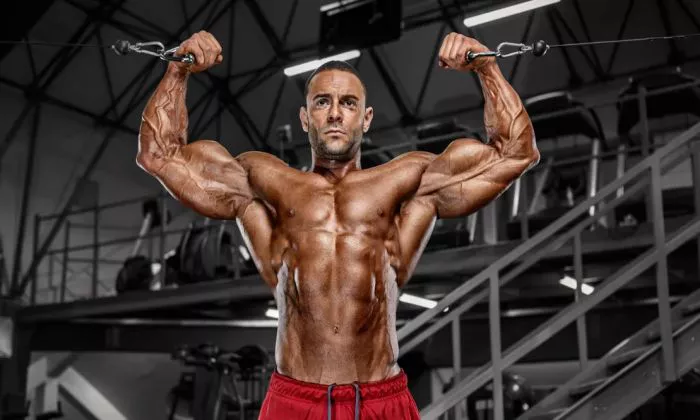Bodybuilders follow specific dietary strategies to achieve low body fat levels while maintaining muscle mass. This process, known as “cutting,” requires a combination of proper nutrition, exercise, and discipline. In this comprehensive guide, we’ll explore the dietary choices and strategies bodybuilders use to shred fat, offering feasible fitness and weight loss suggestions. We’ll break down the essentials into easy-to-understand sections, focusing on practical advice that you can apply to your own fitness journey.
Understanding the Cutting Phase
What Is Cutting?
Cutting is the phase in bodybuilding where the primary goal is to reduce body fat while preserving lean muscle mass. It involves creating a caloric deficit, which means consuming fewer calories than your body needs to maintain its current weight. This deficit forces the body to use stored fat as energy, leading to fat loss.
Why Is Cutting Important?
For bodybuilders, cutting is crucial for achieving a lean and defined physique. It helps highlight muscle definition and overall aesthetics, which is especially important for competitions and photo shoots. For the average person, cutting can help achieve a healthier body composition and improve overall well-being.
Key Principles of a Cutting Diet
Caloric Deficit
A caloric deficit is the cornerstone of fat loss. To shred fat, you need to consume fewer calories than your body burns. The amount of deficit depends on factors like age, gender, activity level, and goals. A moderate deficit of 500-1,000 calories per day is generally recommended for sustainable fat loss.
Macronutrient Ratios
Balancing macronutrients—protein, carbohydrates, and fats—is essential for preserving muscle mass and ensuring overall health.
Protein: Protein is vital for muscle preservation. Bodybuilders typically consume 1.2-2.2 grams of protein per kilogram of body weight. High-protein foods include chicken, turkey, fish, lean beef, eggs, tofu, and legumes.
Carbohydrates: Carbs provide energy for workouts. Bodybuilders often adjust their carb intake based on their activity level. Complex carbs like oats, brown rice, quinoa, and sweet potatoes are preferred for sustained energy.
Fats: Healthy fats support hormone production and overall health. Include sources like avocados, nuts, seeds, olive oil, and fatty fish. Aim for 20-30% of total daily calories from fats.
Meal Timing and Frequency
Bodybuilders often eat several smaller meals throughout the day to maintain steady energy levels and support muscle recovery. While meal frequency can vary, eating every 3-4 hours is common.
Essential Foods for Shredding Fat
Lean Proteins
Chicken Breast: A staple for its high protein and low fat content.
Turkey: Another lean option, great for variety.
Fish: Rich in omega-3 fatty acids and lean protein.
Egg Whites: Low in calories and high in protein.
Tofu and Tempeh: Plant-based proteins that are versatile and nutritious.
Complex Carbohydrates
Oats: A great source of fiber and complex carbs.
Brown Rice: A versatile grain with a good carb-to-protein ratio.
Quinoa: Contains all nine essential amino acids.
Sweet Potatoes: Packed with vitamins and minerals.
Healthy Fats
Avocados: Rich in monounsaturated fats.
Nuts and Seeds: Provide healthy fats and protein.
Olive Oil: A staple for cooking and dressings.
Fatty Fish: Salmon, mackerel, and sardines are excellent sources of omega-3s.
Vegetables and Fruits
Leafy Greens: Spinach, kale, and broccoli are low in calories and high in nutrients.
Berries: High in antioxidants and fiber.
Citrus Fruits: Great for vitamin C and hydration.
Supplements to Consider
Protein Powder
Whey protein, casein, and plant-based options can help meet protein needs, especially post-workout.
BCAAs (Branched-Chain Amino Acids)
BCAAs can aid in muscle recovery and reduce muscle soreness.
Omega-3 Fatty Acids
Supplementing with fish oil can support heart health and reduce inflammation.
Multivitamins
A good multivitamin can fill any nutritional gaps in your diet.
Training Considerations
Strength Training
Lifting weights is crucial for preserving muscle mass during a cut. Focus on compound movements like squats, deadlifts, bench presses, and rows.
Cardio
Cardio helps increase calorie expenditure. Incorporate both steady-state and high-intensity interval training (HIIT) for optimal fat loss.
Rest and Recovery
Adequate sleep and recovery are essential. Aim for 7-9 hours of sleep per night and consider incorporating rest days into your workout routine.
Common Mistakes to Avoid
Overrestricting Calories
Severe calorie restriction can lead to muscle loss, metabolic slowdown, and nutrient deficiencies. Aim for a moderate deficit and adjust as needed.
Neglecting Protein Intake
Failing to consume enough protein can result in muscle loss. Prioritize protein in every meal.
Ignoring Healthy Fats
Healthy fats are essential for hormone production and overall health. Don’t cut them out entirely.
Overtraining
Excessive exercise without adequate recovery can lead to burnout and injury. Balance your training with rest.
See Also: What To Eat While Intermittent Fasting To Lose Weight
Sample Meal Plan for Shredding Fat
Breakfast
Egg White Omelet: Made with spinach, tomatoes, and mushrooms.
Oats: Cooked with water or almond milk, topped with berries and a teaspoon of almond butter.
Mid-Morning Snack
Greek Yogurt: Low-fat, plain, topped with a handful of nuts and a drizzle of honey.
Lunch
Grilled Chicken Salad: Mixed greens, cherry tomatoes, cucumbers, and a balsamic vinaigrette.
Quinoa: A small serving on the side.
Afternoon Snack
Protein Shake: Whey protein blended with water, a banana, and a handful of spinach.
Dinner
Baked Salmon: Seasoned with herbs and lemon.
Sweet Potato: Baked or steamed.
Steamed Broccoli: Drizzled with olive oil.
Evening Snack
Cottage Cheese: Low-fat, with a handful of berries.
Staying Consistent and Motivated
Set Realistic Goals
Set achievable goals and track your progress. Celebrate small victories along the way.
Find a Support System
Having a workout buddy or coach can keep you accountable and motivated.
Stay Informed
Continue to educate yourself about nutrition and training. Stay updated on the latest research and trends.
Conclusion
Shredding fat like a bodybuilder requires a well-structured diet, consistent training, and a disciplined mindset. By following the principles outlined in this guide, you can achieve a lean and defined physique while maintaining overall health. Remember, the journey to a leaner body is a marathon, not a sprint. Stay patient, stay consistent, and the results will follow.


